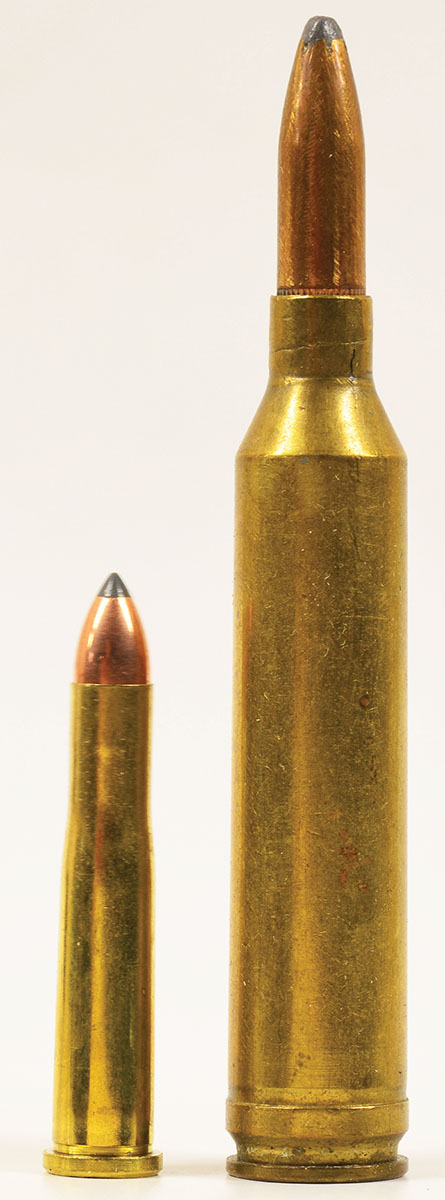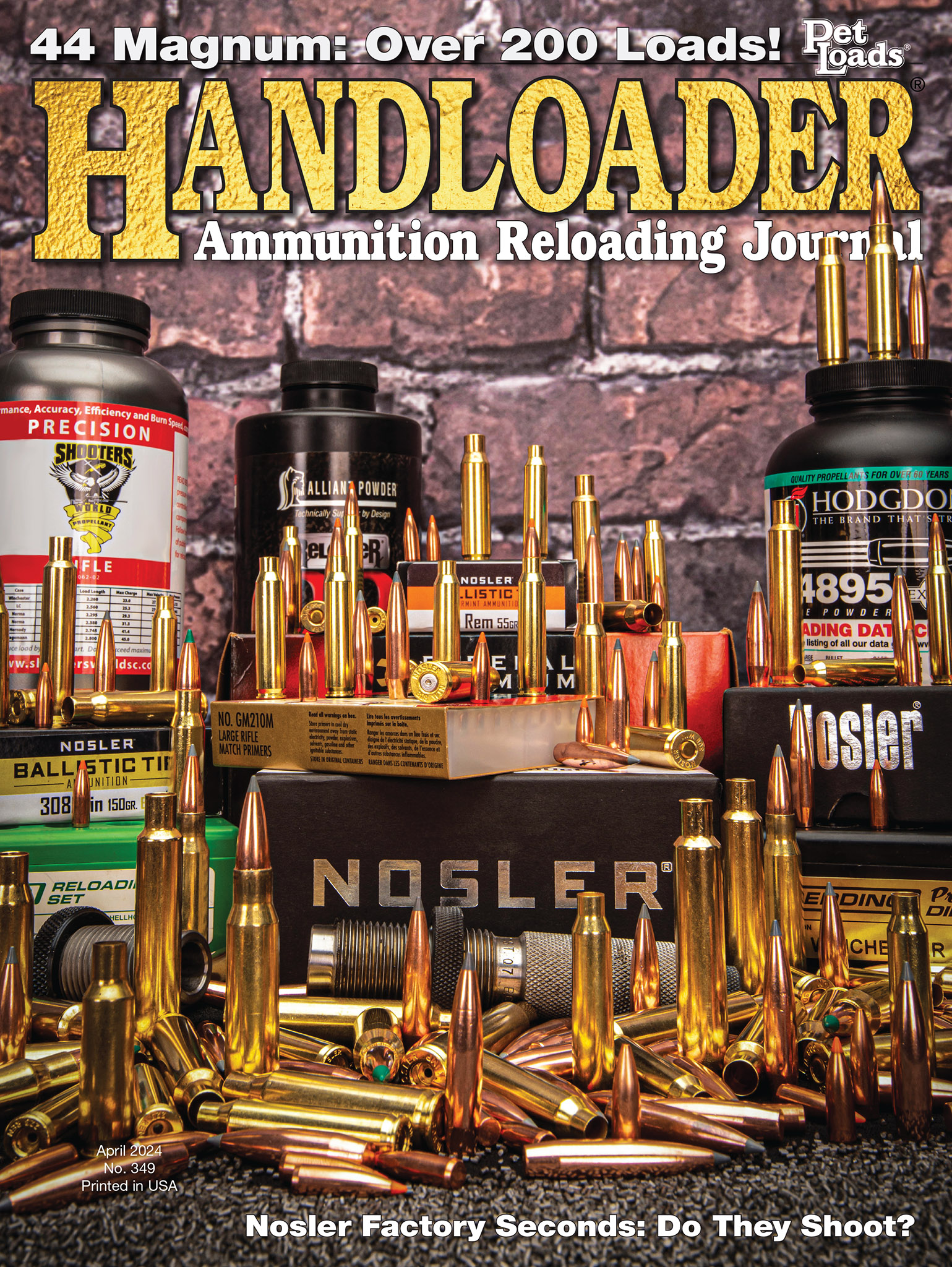In Range
Ten Grand, Now Well Spent
column By: Terry Wieland | April, 24

Before the war, handloading had been the province of a small coterie of enthusiasts who were widely regarded, even by other shooters, as wackos who would eventually blow themselves up. Truth to tell, a few did exactly that, usually through such practices as keeping a 20-pound keg of Unique open beside the loading bench while chain-smoking cigars, or flipping trays of primers into a coffee can.
After 1945, however, what had been a dark and somewhat shady art emerged into the sunlight as a mainstream shooting activity. A number of factors came into play, primarily an explosion of interest in shooting combined with post-war ammunition shortages. The other virtues of handloading, including economics and superior performance, came into play later. By the mid-1960s, handloading had become widespread enough that magazine editors thought it worthwhile to employ a full-time handloading editor.
The June 1966, issue of G&A is like a “Who’s Who” of the shooting world, 60 years ago. Elmer Keith had the title of shooting editor, Jeff Cooper covered handguns, and Bob Bell was writing about optics; Grits Gresham was a field editor, Parker O. Ackley covered gunsmithing and answered ballistics questions from readers; Bob Forker was on rifles and Clyde Ormond was on hunting out west. Magazine mastheads don’t get much more stellar than that.
In that issue, Bob Hutton decided he’d had enough and it was time to unload – in print, for all the world to see. What was he fed up with? Wildcats, mostly, and people who claimed to have designed, originated or – his particular bugbear – developed one.
As he noted (quite rightly, but he was not the first) there had been no genuine new “development” in cartridges since the 8x57 (8mm Mauser) burst on the scene in 1888 – 60 years earlier. Everything since, he said, had been variations on a theme.
No one has been able to pin down the exact date of the first wildcat cartridge, but most believe it was in the 1880s. It took rifle and ammunition companies a little while to realize they could make money by introducing new cartridges, with new and evermore outlandish claims, but once the idea took hold, there was no stopping them.
Individuals got into the act, too. It’s generally believed the 22 Hornet was the first actual wildcat, as we would define it, and it was later adopted as a factory round. By the 1930s, wildcatting was in full swing with, it seemed, a new wunderkind appearing every month or so.
What set Hutton off was a letter from a reader claiming to have developed a marvelous new cartridge that would do things no other had ever done. His creation was based on the then-new 284 Winchester.
Hutton pointed out that when that cartridge appeared three years earlier, he had necked it down to 257 at the behest of a Los Angeles lawyer who wanted to upgrade his 257 Roberts to something with more reach. Thus was created the 257-284. Hutton and his cohorts at G&A then proceeded to neck the 284 case up and down, creating the 6mm-284, 25-284, 6.5mm-284, 270-284, 30-284 and 35-284. P.O. Ackley made barrels and RCBS produced dies; Petersen Publishing picked up the tab, and the work was copyrighted, with the first reports appearing in G&A in 1963.
This was not the first time Hutton & Co. had undertaken such a project. In 1961, they did something similar with the 348 Winchester, creating wildcats in 30, 35, 37, 40 and 45 calibers. This was intended to offer more powerful, or longer range, alternatives for hunters in Alaska who favored the Winchester Model 71 lever action, which was the only rifle chambering the 348. Seems like a pretty small target audience. How many were actually made, or converted, or rebarreled? Who knows? I suspect very few.
This, apparently, became the “policy” of G&A’s “technical division,” taking every new cartridge case that came along and necking it up, down and sideways. This they did with the 224 Weatherby (1963), 444 Marlin (1964) and 350 Remington Magnum (1965).
A few of these creations made it into some editions of Cartridges of the World, but not all, and none that I know of became wildly popular. Considering Hutton’s advantages – a gun-nut boss (Robert Petersen) willing to spend money, P.O. Ackley and RCBS at his beck and call, and the ability to endlessly promote at no cost through a major magazine – you’d think at least one would be a hit. But no.
Norma did pick up the 6.5mm-284 many years later, and it’s hard to say whether the 6.5 Remington Magnum (1966) resulted from Hutton’s efforts or if Remington already had it in the works. Obviously, those two cartridges overlapped in performance, so it was a question of whether you wanted your short-action super 6.5 to have a belt or a rebated rim. Decisions, decisions.
Parker Ackley was the one who made popular the idea for wildcats that appealed to the masses, gave instant gratification with minimal effort, and so really caught on: the so-called “Ackley Improved” series. This consisted of merely blowing out an existing case to give it slightly more powder capacity. This was not actually Ackley’s idea, since Lysle Kilbourn had already done it with the 22 Hornet to create the K-Hornet, but Ackley turned it into a cottage industry.
Compare this mass production of wildcat designs (if not the wildcats themselves) to the earlier work of Ned Roberts, with his 257, and Phil Sharpe, with his 7x61 Sharpe & Hart. Both claimed to have spent $10,000 in the “development” of their babies, at a time when ten grand was about the equivalent of $220,000 today (Roberts, 1935), and $120,000 (Sharpe, 1950). Roberts apparently spent most of this money fiddling with shoulder angles and making one new barrel after another, while Sharpe set up endless experiments, all proving more or less the same thing.
Both, it must be said, are excellent cartridges that are accurate, efficient, and well-balanced. The Roberts later got the Ackley treatment, and there are probably more 257 Roberts Ackley Improved rifles floating around than any of his others, with the possible exception of the 280 (Remington) AI.
If this proves anything, it’s that creating a wildcat is a crapshoot. There is no surefire formula for success. In fairness, however, one should note that the big companies’ success rate is not exactly a hundred percent. For every 222 Remington there’s a 225 Winchester, and for every 270 Winchester, a 6.5 Remington Magnum. If nothing else, wildcatting keeps the big ammunition companies on their toes.
In closing, here is one wildcat we know for sure never worked.
In that June, 1966, issue of Guns & Ammo, Ackley responded to a reader who intended to build a rifle for a 264 Winchester Magnum necked down to 22. Even in those hairy days, such a creation was jaw-dropping.
The correspondent, who identified himself only as “A2C,” wanted to know if 37.1 grains of IMR-4320, behind a Speer 40-grain bullet, would create excessive pressure. (To save you looking it up, in Speer’s Manual #7 (1966), that’s not even a starting load for the smaller 220 Swift.)
To his credit, with a straight face, Ackley replied that, in such a “badly overbore” cartridge, not only would it not generate much pressure, “Neither will it produce much velocity, probably not as high as the .22 Hornet factory load.”
Ah, wildcatting!


